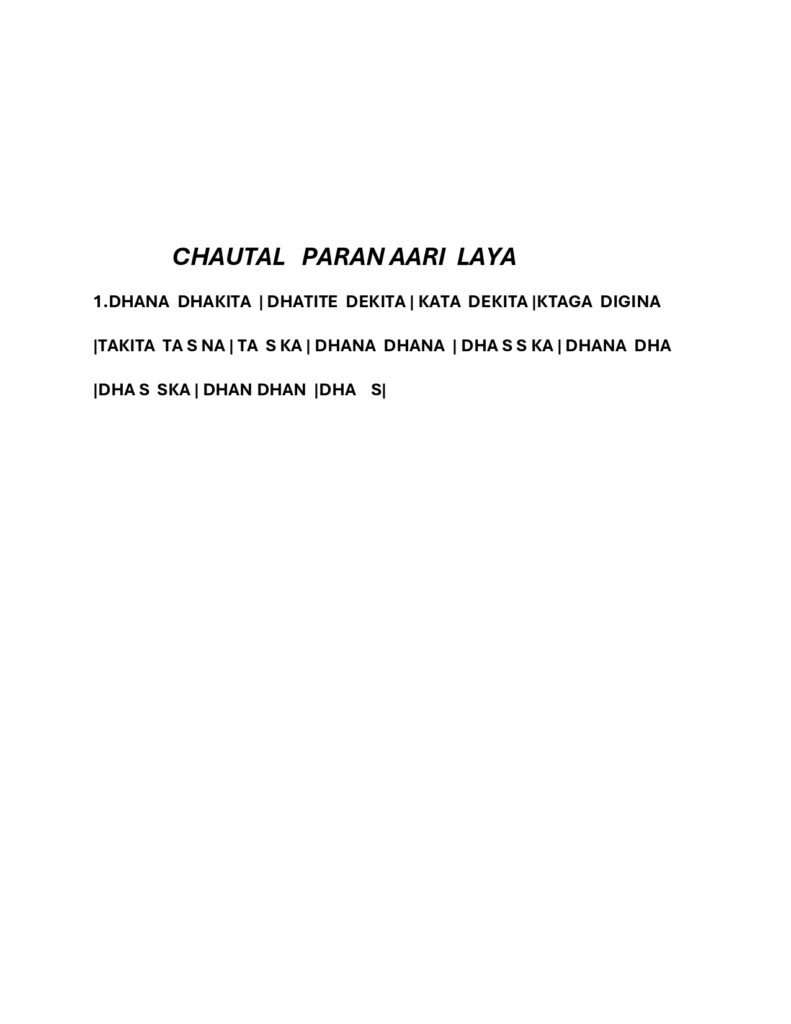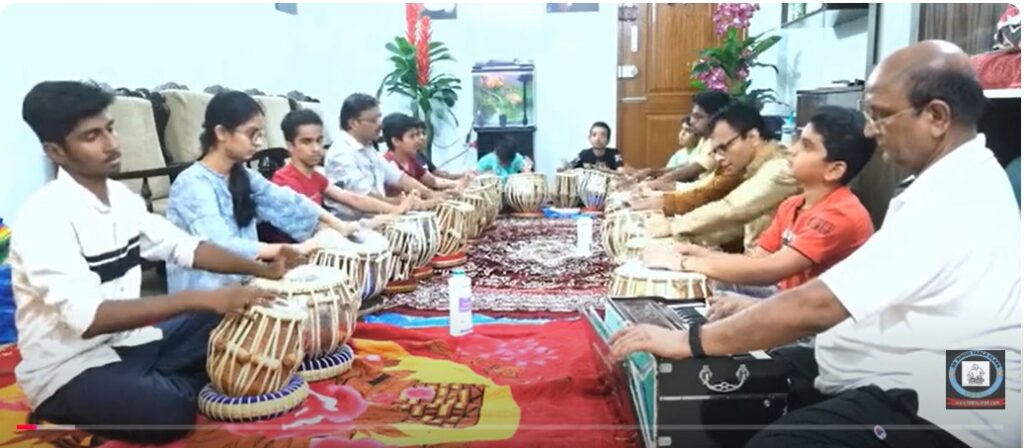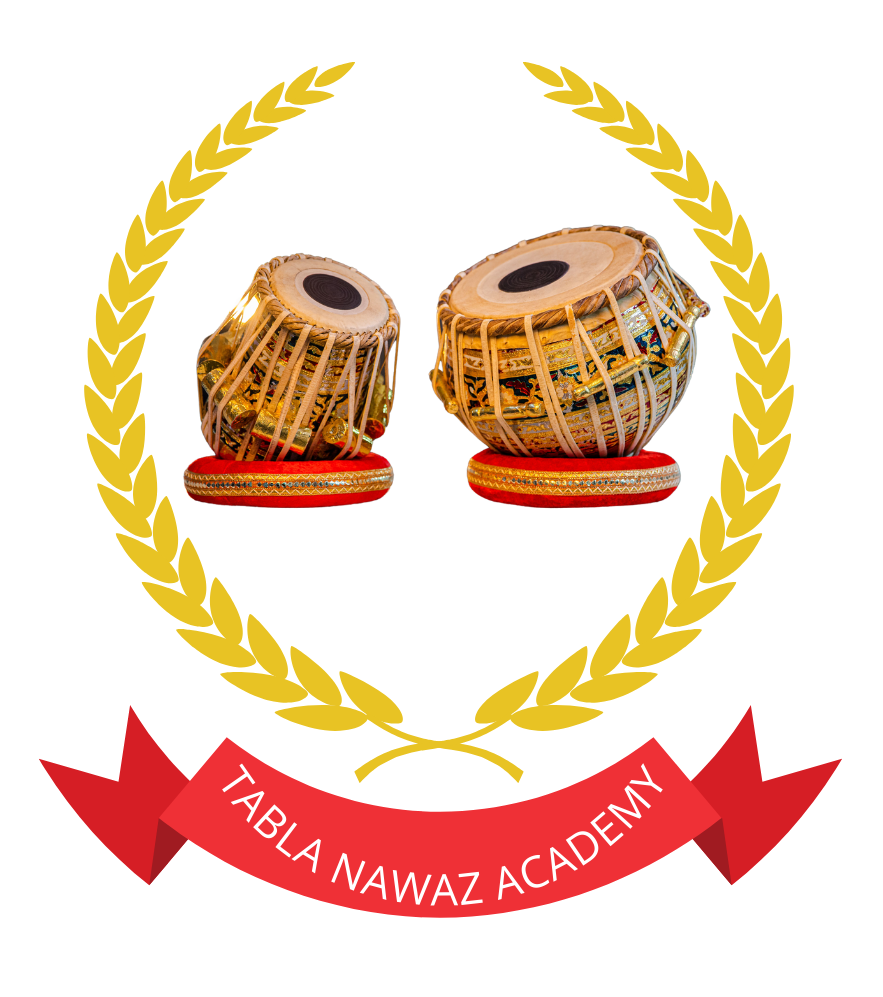MahaNaad – A Chautaal Paran in Aari Laya-12 Beat, Introduction: The Sound Before SoundIn Indian classical music, rhythm is not just a timekeeper—it’s a living, breathing entity. “MahaNaad”, meaning The Great Sound, evokes the idea of the first vibration, the cosmic hum that set the universe in motion. In the world of tabla and pakhawaj, Paran compositions embody this ancient force. When set in Chautaal (a 12-beat rhythmic cycle) and played in Aari Laya (a slow, delicate tempo), a Paran becomes a meditative dance of power and poise. MahaNaad – A Chautaal Paran in Aari Laya is more than a performance—it is an offering to time itself.
What Is a Paran?

A Paran is a type of composition originating from the pakhawaj tradition, often featuring bold, energetic phrases with consonants like dha, din, ta, tun, ka, ghera, etc. These phrases mimic war drums, nature’s elements, or mythical dances like Tandava. Unlike softer compositions like tukras, a Paran is often majestic, ritualistic, and dramatic in character.
When performed on tabla, especially in a slow laya, it gains even more gravitas—every syllable (bol) becomes a mantra, every pause becomes a meditation.
Understanding Chautaal – The Cycle of Twelve
Chautaal is a 12-beat rhythmic cycle used primarily in Dhrupad and pakhawaj traditions. Its balanced structure (divided into 6 sections of 2 beats) offers a symmetrical and spacious playground for compositions like Paran, allowing them to breathe and expand.
Here’s the theka (basic pattern) of Chautaal:
Dha Dha | Dhin Ta | Kita Dha | Tin Ta | Dhin Ta | Kita Dha
This cycle has an austere, ceremonial feel—ideal for unfolding a composition like MahaNaad in Aari Laya.
What is Aari Laya?
Aari Laya refers to a slow, unfolding tempo—the opposite of fast (Drut) or medium (Madhya) speeds. It invites the listener to experience every syllable with full presence. In this tempo, even a single stroke feels monumental.
In MahaNaad, Aari Laya transforms the Paran into an act of worship. It feels less like drumming, and more like sculpting silence with sound.
Breakdown of MahaNaad: A Paran Structure
While every performer can interpret a Paran differently, a traditional Chautaal Paran in Aari Laya might look like this:
Dha – Krid Dha – Tun Na | Dha – S, Dha – Krid Dha | Ta Dha – Ghera – Dha – Tun | Dha S Dha
This is followed by bold repetitions and dramatic pauses before resolving into the Sam (the first beat of the cycle).
In slow tempo, the phrases unfold gradually, with deep resonance, almost like temple bells echoing through space.
Why MahaNaad is Special
- Spiritual Depth: The use of Aari Laya allows the performer and listener to sink into the present moment, elevating the Paran beyond entertainment—into a form of meditation.
- Historical Echoes: This kind of Paran mirrors what might have been played in royal courts or temples centuries ago, preserving the lineage of pakhawaj and dhrupad-style rhythm.
- Rhythmic Majesty: The twelve-beat Chautaal, slow tempo, and thunderous syllables create a majestic, cinematic effect—like watching a sun rise in slow motion.
Famous Inspirations and Maestros
Parans like MahaNaad take inspiration from legendary pakhawaj and tabla exponents such as:
- Pandit Mohan Shyam Sharma
- Ustad Zakir Hussain (in collaborative dhrupad settings)
- Tabla Nawaz SB Singh (known for rhythmic architecture)
- Shri Gundecha Brothers (vocalists who have worked with such compositions in Dhrupad)
Multimedia Experience
🎧 Coming Soon: [Audio Clip of MahaNaad – Aari Laya Performance]
🎥 Watch: [YouTube link of Chautaal Paran by a maestro]
🎼 PDF Download: [Notation Sheet – MahaNaad in Chautaal Aari Laya]
Conclusion: Breathing Rhythm, Living Silence
MahaNaad – A Chautaal Paran in Aari Laya is not just a rhythmic composition—it’s a portal into the ancient soul of Indian rhythm. It slows down time, deepens breath, and magnifies sound into sacred space.
In a world addicted to speed, MahaNaad reminds us that slowness has power, and rhythm is not just about speed—it’s about soul.
🥁 Try This:
- Close your eyes. Clap Chautaal slowly: Dha… Dha… | Dhin… Ta…
- Now imagine each stroke resonating like a mountain echo.
- That’s MahaNaad—the rhythm before music.
https://www.youtube.com/@BhagawanSingh

